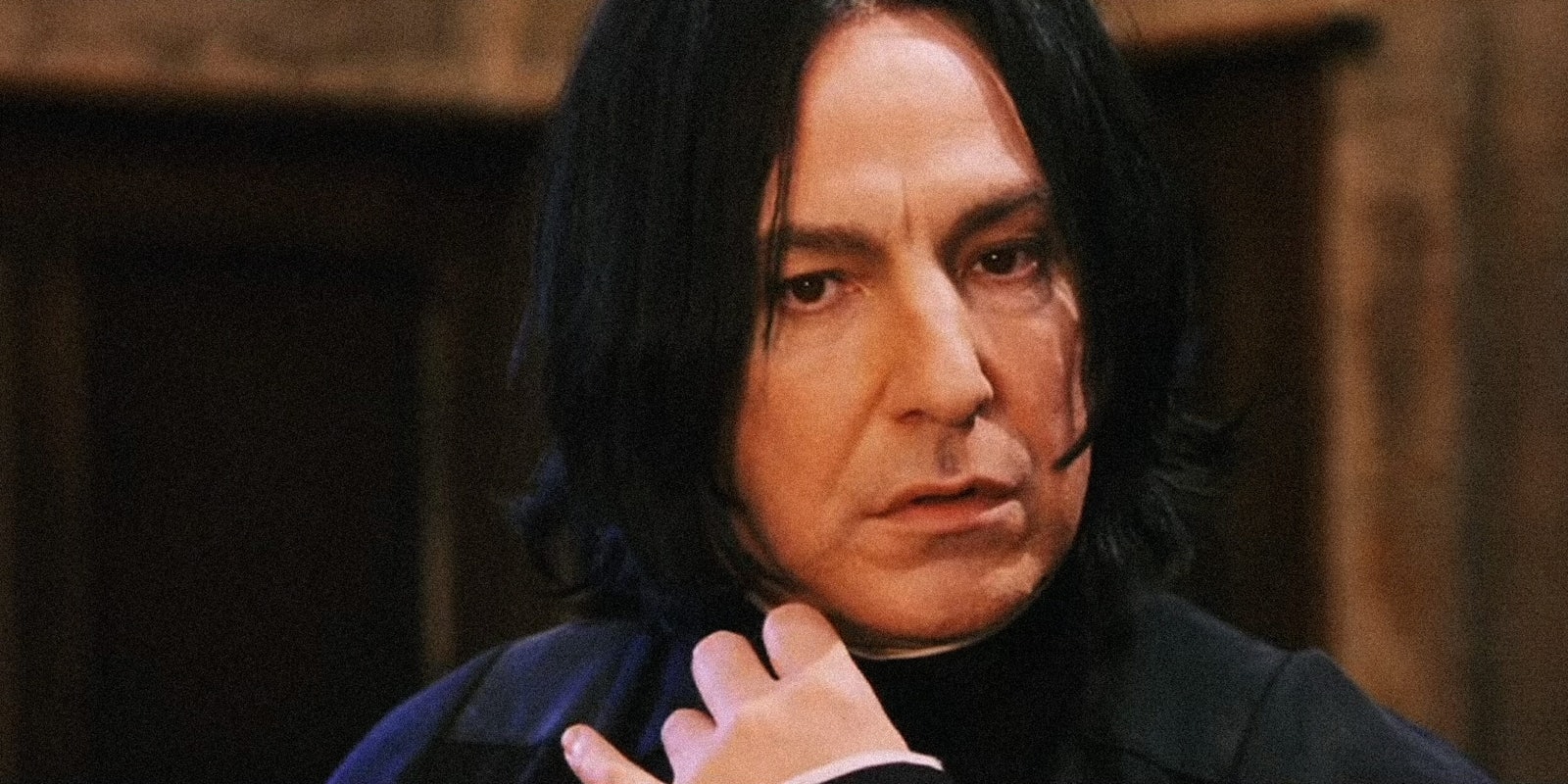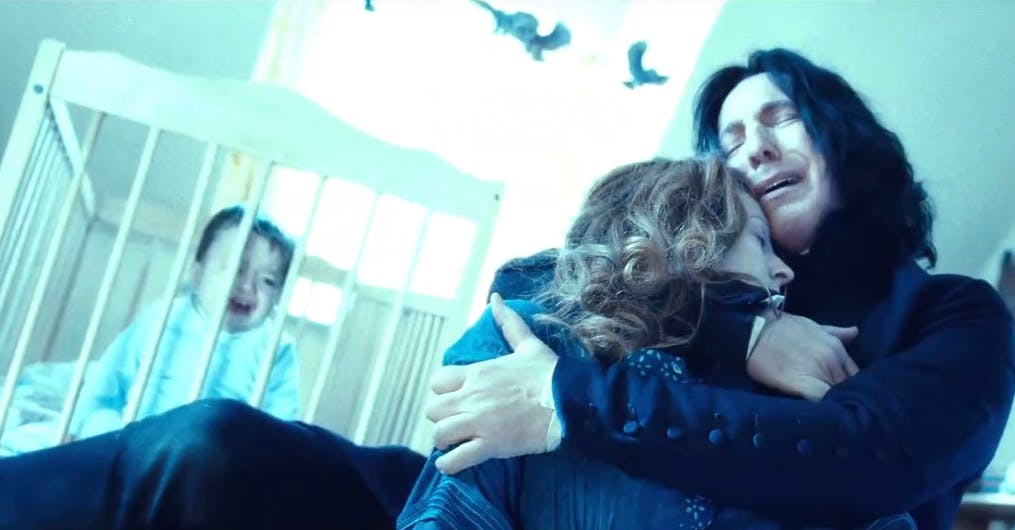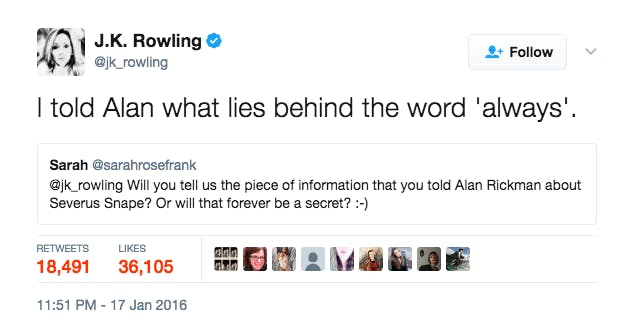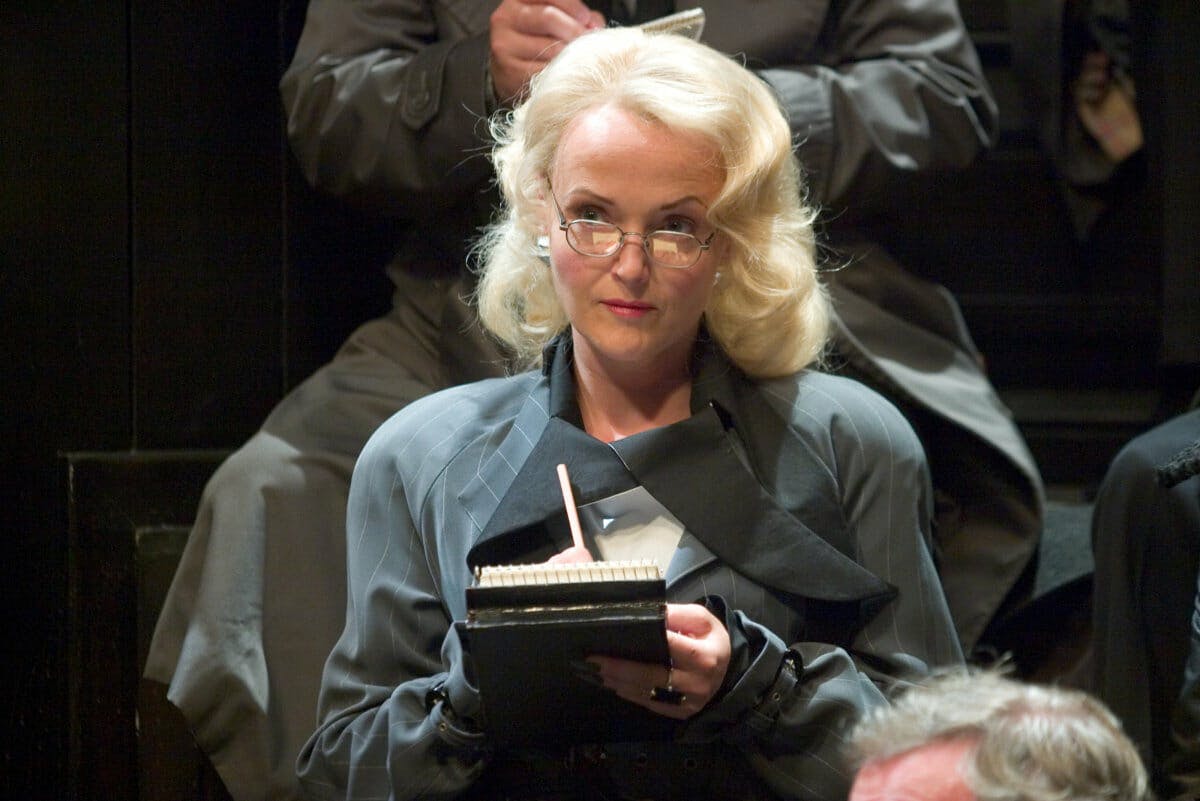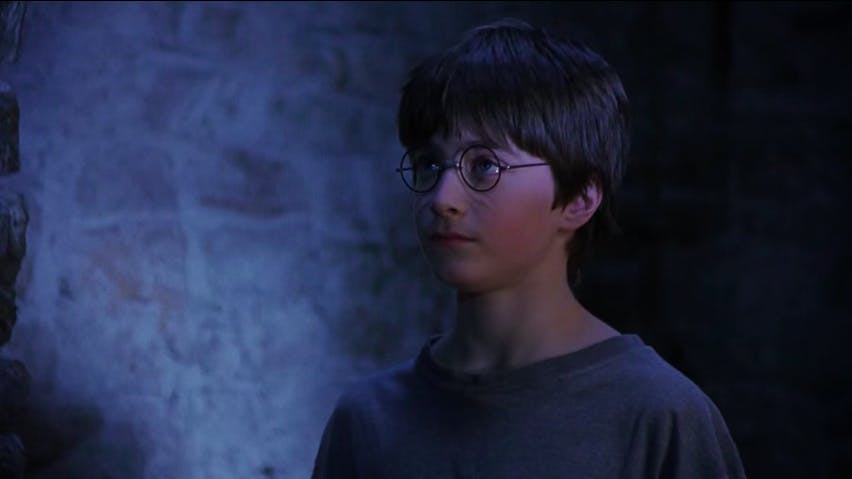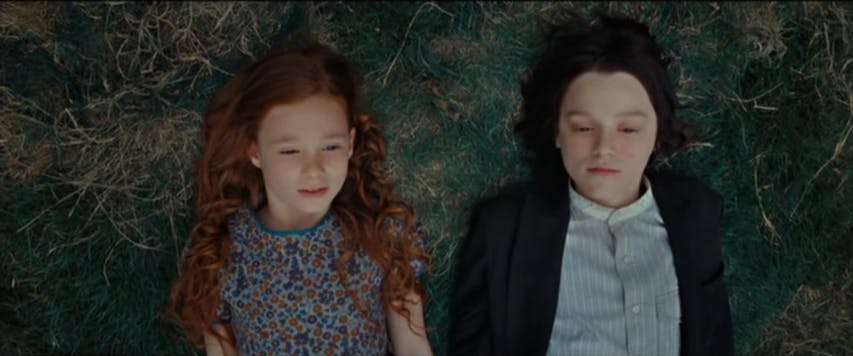Harry Potter fans have spent decades analyzing and debating aspects of J.K. Rowling’s beloved series, but no character has been more scrutinized than Hogwarts’ Potions master, Severus Snape.
Initially set up as an antagonist who seemed out to get Harry from the start, Snape quickly became one of the most polarizing characters in and out of the books. Snape would be a major roadblock and a lifesaver, sometimes on the same page. His true loyalties always seemed up in the air to other characters, but Dumbledore’s trust in him never wavered. Fans guessed at the reason behind Snape’s loyalty even after Voldemort’s return, but they didn’t find out the full truth until an emotional reveal in Deathly Hallows.
But that’s just scratching the surface on what we know about Hogwarts’ most polarizing professor. Here are seven Severus Snape facts you may not know.
13 fascinating facts about Severus Snape
1) Snape is a Capricorn
Dates are very important in the Harry Potter universe, especially given that Rowling eventually made a timeline fans mapped out canon. We know the birthdays of more than a dozen characters from Hogwarts professors to the entire Weasley family. Even Voldemort’s is noted: Dec. 31, 1926.
Harry’s birthday on July 31, 1980, played a significant part in the plot (and July 31 is also Rowling’s birthday). Ron’s near-death experience in Half-Blood Prince occurs on his 17th birthday, although the date isn’t mentioned. Most character’s birthdays don’t play into the story at all, though they were revealed on an older version of Rowling’s website.
Snape is one of those people. His birthday lands on Jan. 9, 1960, putting him toward the middle of his Hogwarts class. He’s a couple months younger than Sirius but slightly older than Lily, James, and Lupin. (Peter Pettigrew has yet to be given a birthday.)
2) One of Snape’s illustrated traits didn’t make it to the movies
For many fans, the Harry Potter books informed what we thought characters would look like before we ever saw them on screen. The late, great Alan Rickman‘s portrayal of Snape, however, came to perfectly embody the double-agent and thorn in Harry’s side. His long, black hair, the sour expressions, that low and threatening voice: It was all Snape, but Rickman made it a reality.
READ MORE:
- 10 dark facts about Draco Malfoy
- Everything we know about Fantastic Beasts 2
- The 9 best things ‘Harry Potter’ gave the world
It’s easy to forget that Rickman’s Snape isn’t an exact copy of the character from the book. For instance, did you remember that illustrations from Mary GrandPré (the original American illustrator of the Harry Potter series) and even Rowling herself drew Snape with a goatee? His hairstyle also changed between Order of the Phoenix and Half-Blood Prince making it look more Rickman-esque, but the facial hair was a constant.
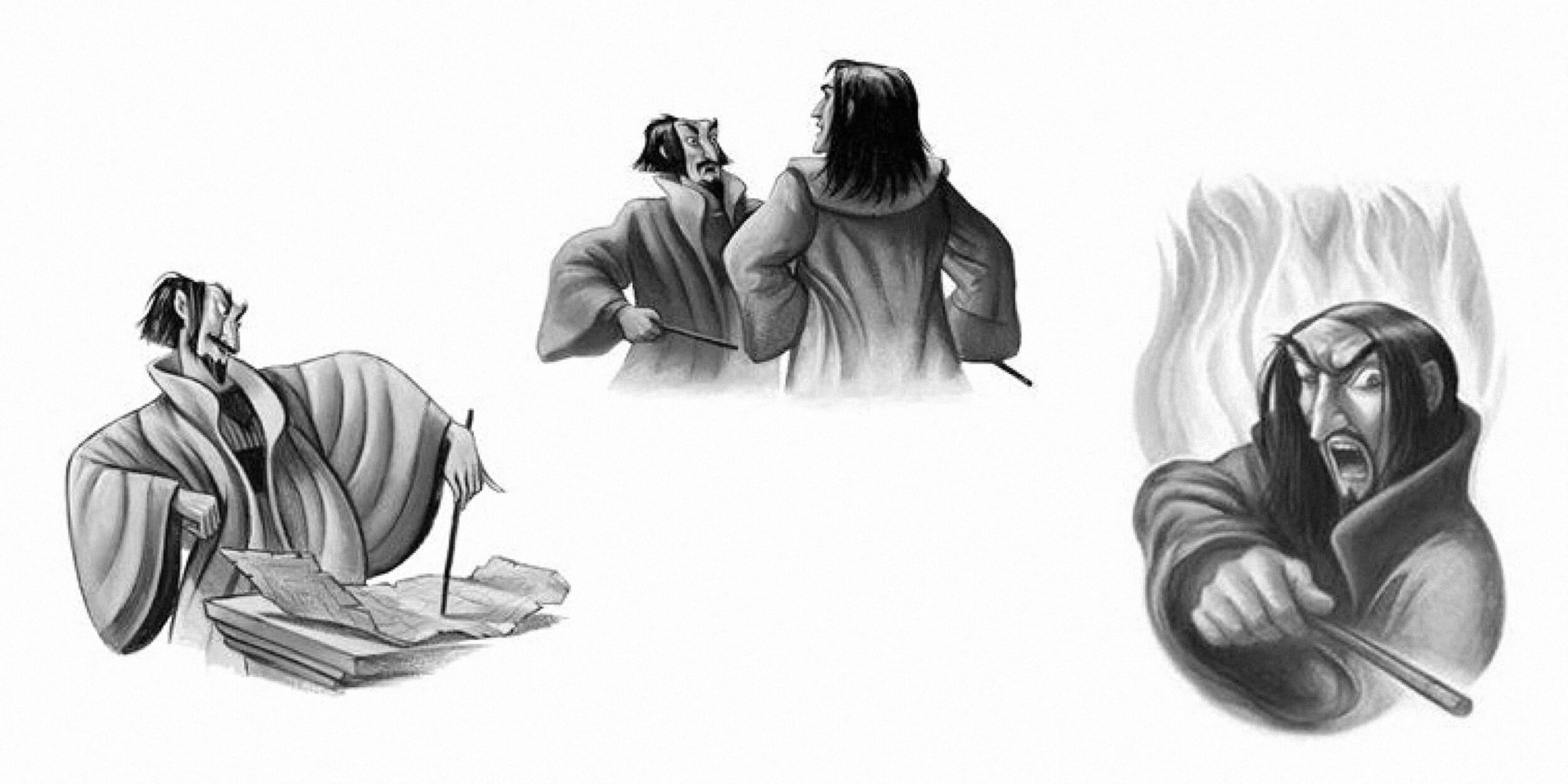
We’ve seen Rickman with facial hair in other roles over the years—and he was very good at wearing it. But it’s hard to picture Snape with the sort of facial hair that was drawn for him on the page.
3) Alan Rickman had a part in creating Snape’s on-screen look
It wasn’t just the physical looks that endeared Rickman to fans. In a 2012 interview with the New York Times, he discussed his role in helping to create Snape’s costume—and how vital it was that certain details appeared, including the number of buttons on his (probably only) costume.
“I was very specific about it,” he said. “I said the sleeves should be really tight and there should be a lot of buttons. Because that helps me, the idea that he has to do… [motions buttoning Snape’s shirt] to actually button in. And you know, it’s very different.”
4) Snape had a unique ability among Death Eaters
For all of Snape’s work to hide his true colors over the years, his cover could’ve been blown had he been asked to produce a Patronus.
His Patronus—a doe for Lily Potter—was proof that he still loved her years after her death, and that he wasn’t really on Voldemort’s side, no matter what he said or did. And yes, that includes killing Dumbledore on Dumbledore’s orders.
Although Harry pointed this fact out to Voldemort during their final confrontation, Voldemort probably wouldn’t have thought to pose the test. Death Eaters didn’t need Patronuses to protect themselves from allied creatures.
“…A Patronus is used against things that the Death Eaters generally generate, or fight alongside,” Rowling said when asked about it in a 2007 fan chat. “They would not need Patronuses.”
The Order of the Phoenix, on the other hand, used Patronuses to pass secret messages along to one another. Even if Snape communicated with nobody other than Dumbledore, it would’ve been a necessary skill to learn.
5) Alan Rickman kept a secret about Snape until his death
Snape always knew more than what met the eye, and as it turned out, so did Rickman. While chatting with Rowling before he started filming, she told him something about Snape that wouldn’t come to light for years. It proved to be a key piece of information for him and allowed him to understand the significance of scenes that didn’t gel with Snape’s early persona. He hinted at it a couple of times in interviews, but the secret stayed with him until his death in 2016.
While mourning Rickman, a fan asked Rowling what she told him. Rowling replied, giving fans even more reason to feel choked up over the word “always,” which encapsulated Snape’s unending love for Lily and his commitment to helping her son.
6) It took some time for Snape’s portrait to appear in the Headmaster’s office
Snape had a short reign as Headmaster of Hogwarts—much of it spent secretly helping Harry and attempting to protect students from the Carrows—and it ended rather abruptly. After being confronted by Professor McGonagall and the other Hogwarts teachers, Snape jumped out a window and fled.
Upon his death a few hours later, Snape’s portrait wasn’t added to the Headmaster’s office straight away. One reason might’ve been the suddenness of the death: He was Headmaster for less than a year, and it’s unknown whether he had a portrait commissioned. He also abandoned his post prior to his death and, per Rowling, “He had not merited inclusion in these august circles.”
However, that changed over time. Harry, wanting to clear Snape’s name, argued for his inclusion and had a key role in making it happen. According to the Pottermore ebook Short Stories from Hogwarts of Heroism, Hardship and Dangerous Hobbies, Harry privately convinced Professor McGonagall to add Snape’s portrait alongside the other Headmasters, though it was a controversial decision.
7) Snape wasn’t immune to the Rita Skeeter treatment
Although Rita Skeeter didn’t make a major appearance in the Harry Potter series after Goblet of Fire, her presence could still be felt via the highly exaggerated biography The Life and Lies of Albus Dumbledore, published shortly after his death. Skeeter wrote numerous other books in the decades since. Dumbledore’s Army: The Dark Side of the Demob came out in 2014 after the Quidditch World Cup, according to an archived Pottermore story. Her 2017 biography, Man or Monster? The TRUTH about Newt Scamander, claimed that Newt Scamander tried to infiltrate MACUSA under Dumbledore’s orders. Newt scoffed at the claim in the 2017 edition of Fantastic Beasts and Where to Find Them.
And according to Rowling, Snape even got a highly inaccurate biography of his own titled Snape: Scoundrel or Saint?
As was always the case with this controversial character, it’s probably a bit of both.
8) Snape eventually found out about his namesake
By the time Albus Severus Potter—Harry and Ginny’s second child—made his way to Hogwarts, Snape had been dead for nearly 20 years. That all changed with Harry Potter and the Cursed Child, which introduced time travel beyond the span of a few hours and an alternate timeline where Voldemort won and killed Harry at the Battle of Hogwarts. With Harry’s death, Albus no longer exists, while Scorpius, Draco Malfoy’s only child, is popular. But Scorpius, having realized just how much he screwed up, enlists the help of Ron, Hermione, and a still-alive Snape to get him back and stop himself from ever creating their timeline.
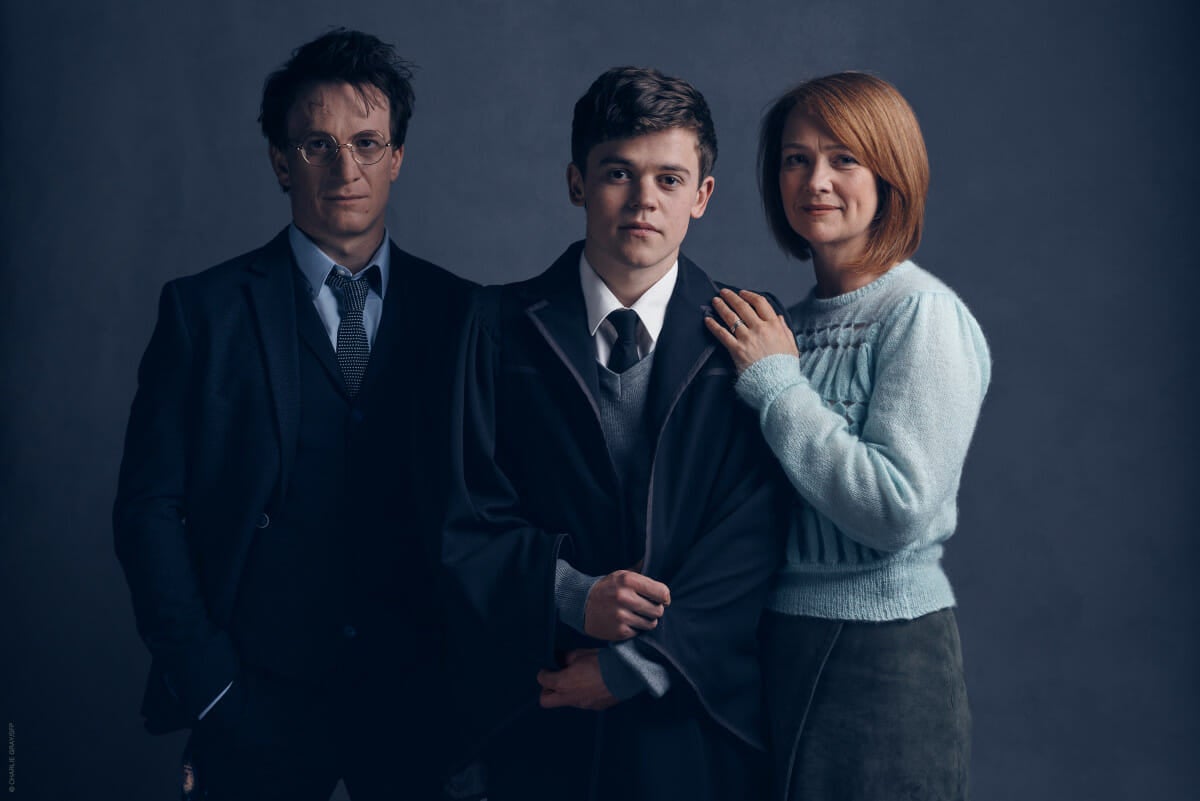
Apart from Scorpius revealing what he knows about Snape’s true colors (which is known more publicly in Scorpius’ timeline), he also told to Snape that not only Harry lived but he named a son after him. The plan to send Scorpius back in the past works, but at the cost of Snape, Ron, and Hermione’s lives. Before he died in the alternate timeline, Snape had one final message to give Scorpius after he succeeds success.
“Tell Albus—tell Albus Severus—I’m proud he carries my name,” Snape said.
READ MORE:
- The best Lego sets of 2017 (so far)
- The complete Marvel Studios movie calendar
- The best order to watch the X-Men movies
9) Albus Severus isn’t the only name Snape inspired
Snape is often described as pale and rather crabby, to put it lightly. So the most recent bearer of his name, the Harryplax severus, is a rather fitting one.

While the crab bearing Snape’s name was first found in Guam close to 20 years ago, scientists only recently discovered that they had a new species on their hands—something they gave a nod to when naming it.
“It is also an allusion to a notorious and misunderstood character in the Harry Potter novels, Professor Severus Snape, for his ability to keep one of the most important secrets in the story, just like the present new species which has eluded discovery until now, nearly 20 years after it was first collected,” Jose C.E. Mendoza and Peter K.L. Ng wrote in their study of the crab.
While Snape didn’t mind the fact that Harry honored him well after his death, we’re not quite sure he’d have been thrilled being even more closely associated with Harry.
10) Snape remains controversial among fans
To this day, no character in Harry Potter draws more ire and controversy from fans than Snape (though Rowling’s doubts over whether Ron and Hermione’s marriage would last came close). Prior to Deathly Hallows, the fandom debate was about whether Snape was good or evil. After Deathly Hallows fans focused even more deeply on his character. Yes, he was ultimately on Dumbledore and Harry’s side, but what were his motives? Was he “the bravest man I ever knew,” as Harry said in the book’s controversial epilogue? Did his act of bravery not cancel out the years he bullied students—and not just Harry, who got the brunt of it—and years of following Voldemort’s orders before switching sides? He loved Lily Potter for most of his life, but was his devotion to her romantic or more on the selfish side (and almost akin to “nice guy syndrome”)?
It’s a series of debates that have raged on for years, with Rowling even weighing in around 2015.

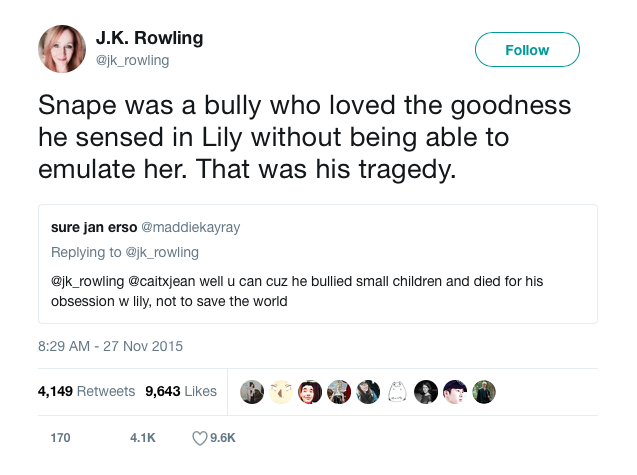
Even now, Rowling is cautious whenever she mentions Snape on Twitter. In a now-annual tradition, she apologized for killing Snape on the 19th anniversary of the Battle of Hogwarts and asked people not to “start flame wars over it.”

11) Rowling debunked that infamous Snape theory
While Prisoner of Azkaban didn’t introduce the idea of Animagi or the general idea of wizards and witches turning into creatures—Professor McGonagall transformed from a cat in Sorcerer’s Stone’s very first chapter—it brought it into the mainstream. Not only were Animagi a thing, there were secret (and illegal) Animagi. And there were werewolves like Professor Remus Lupin. Vampires have never played a huge role in the Harry Potter books, but some fans have long suspected they did—with the one character who changed the game.
Fans have suspected that Snape was a vampire for years. He’s often described as looking like a bat, both in-person and when he escapes Hogwarts in Deathly Hallows. His pale skin is described as “sallow,” and he’s never seen eating throughout all of the books. Although Rowling has denied the theory in some form since 2004, that hasn’t stopped fans from questioning if it could still happen in future books. They even pointed to Rowling’s own drawing of Snape, which makes him look like a vampire.

Rowling debunked it once and for all in a Pottermore entry first published in December 2014 about vampires. In it, she explained why vampires never factored into the series while revealing she did at one point have a vampire teacher named Trocar at Hogwarts she ended up cutting.
But most importantly, Snape is still not a vampire, no matter how unhealthy or bat-like he looks.
“While it is true that he has an unhealthy pallor, and is sometimes described as looking like a large bat in his long black cloak, he never actually turns into a bat, we meet him outside the castle by daylight, and no corpses with puncture marks in their necks ever turn up at Hogwarts,” Rowling wrote. “In short, Snape is not a revamped Trocar.”
12) Harry once visited Snape’s hometown
Early in Sorcerer’s Stone, Vernon and Petunia Dursley drove Harry and Dudley around England in an attempt to shake off the increasing number of Hogwarts letters, which included a stay at a hotel and a hut located on an island in the middle of nowhere. In the process, Harry visited his mother’s and Snape’s hometown well before he knew where she grew up.
Pottermore revealed that Lily, Petunia, and Snape all lived in the fictional town of Cokeworth, which is located in the English Midlands. It’s where Lily and Snape’s friendship began, formed in part because of their shared magical ability, something Harry witnessed through Snape’s memories in Deathly Hallows. Several decades later, Harry would be taken to Cokeworth to avoid his own magical future at Hogwarts. As we now know, that effort failed spectacularly.
The town, and Spinner’s End, would later feature in Half-Blood Prince as Snape makes an Unbreakable Vow with Narcissa Malfoy to protect Draco and aid him in his quest to murder Dumbledore. And it’s also where—several decades later—Harry would be taken to avoid his own magical future at Hogwarts.
13) Lily might have eventually fallen in love with Snape if it weren’t for that whole Death Eater thing
Snape and Lily’s friendship, as unlikely as it was, endured for years even as they were sorted into rival Houses. (Lily joined James Potter, Sirius Black, Remus Lupin, and Peter Pettigrew in Gryffindor.) She highly disapproved of his friendships with several classmates who eventually became Death Eaters, but their friendship ended in their fifth year after Snape—who had been humiliated by James in front of her—called her a “filthy Mudblood.” She refused his apology afterwards and when asked, Snape didn’t deny that he planned to eventually join Voldemort’s forces.
Snape never stopped loving Lily while she would eventually marry James. But in a much different world, Rowling revealed in a 2007 fan chat, things might have played out differently.
“Yes,” Rowling replied to a fan who asked if Lily had feelings for Snape. “She might even have grown to love him romantically (she certainly loved him as a friend) if he had not loved Dark Magic so much, and been drawn to such loathesome people and acts.”
Editor’s note: This article is regularly updated for relevance.

